#Cathy marston
Explore tagged Tumblr posts
Text


The 2024 US premiere of Cathy Marston's Atonement (adapting the 2001 novel by Ian McEwan) at the Chicago Lyric Theatre, serving as the opening production of the Joffrey Ballet's 2024-25 season and was co-produced with Ballett Zürich.
#ballet#magazine shoot#magazine cover#balletcore#dance#art#photography#atonement#ian mcewan#cathy marston#joffrey ballet#ballett zürich
7 notes
·
View notes
Text
Elena Vostrotina and Brandon Lawrence

Elena Vostrotina Елена Востротина and Brandon Lawrence, “In Our Wishes”, choreo by Cathy Marston, music by Sergey Rachmaninoff Сергей Рахманинов, costume design by Roksanda, 2024 Havana International Ballet Festival, Sala Avellaneda, Teatro Nacional de Cuba, La Habana, Cuba (October 30, 2024).
Source and more info at: Photographer Maykel Espinosa Rodríguez Website Photographer Maykel Espinosa Rodríguez on Facebook Photographer Maykel Espinosa Rodríguez on Instagram (ballet) Photographer Maykel Espinosa Rodríguez on Instagram (street) Photographer Maykel Espinosa Rodríguez on Instagram (portrait)
via Elena Vostrotina on Instagram
Note I: This blog is open to receiving and considering any suggestions, contributions, and/or criticisms that may help correct mistakes or improve its content. Comments are available to any visitor.
Note II: Original quality of photographs might be affected by compression algorithm of the website where they are hosted.
#2024 Havana International Ballet Festival#Brandon Lawrence#Cathy Marston#Elena Vostrotina Елена Востротина#In Our Wishes#Maykel Espinosa Rodríguez#October 30 2024#Roksanda#Sala Avellaneda#Sergey Rachmaninoff Сергей Рахманинов#Teatro Nacional de Cuba
0 notes
Text
Clara/Ballett Zürich - Opernhaus Zürich 01.11.2024
Clara/Ballett Zürich - Opernhaus Zürich 01.11.2024 #cathymarsten #claraschumann #danielcapps #tanz #ballett #saison2024_25 #review
Es ist nach “Atonement” die zweite abendfüllende Neuproduktion von CATHY MARSTEN und zugleich Eröffnung der Ballett-Saison am Opernhaus Zürich: “Clara” – nach “The Cellist“, in dem sie sich mit der Cellistin Jaqueline du Pré auseinandersetzte, nun also ein neues Handlungsballett über Clara Schumann, eine weitere grosse und bedeutende Musikerin und Komponistin ihrer Zeit… Continue reading…
#Ballett Zürich#Bregje van Balen#Cathy Marston#Chandler Dalton#Clara#Clara Schumann#Esteban Berlanga#Hildegard Bechtler#Johannes Brahms#Karen Azatyan#Kritik#Opernhaus Zürich#Philip Feeney#Ragna Schirmer#Rezension#Robert Schumann
0 notes
Text




0 notes
Text
ooc: no Cathy you cannot use Slater as live action John Marston.
2 notes
·
View notes
Text
Some of my personal all time favourite films:
Man Of The West (1958, Anthony Mann)
Scarlet Street (1945, Fritz Lang)
Ran (1985, Akira Kurosawa)
The Strawberry Blonde (1941, Raoul Walsh)
Strangers On A Train (1951, Alfred Hitchcock)
The Evil Dead (1981, Sam Riami)
The Mask Of Zorro (1998, Martin Campbell)
Love & Basketball (2000, Gina Prince-Bythewood)
The Gunfighter (1950, Henry King)
Straw Dogs (1971, Sam Peckinpah)
The People Under The Stairs (1991, Wes Craven)
Candyman (1992, Bernard Rose)
Deathdream (1974, Bob Clark)
The Babadook (2014, Jennifer Kent)
Christine (1983, John Carpenter)
Day Of The Dead (1985, George Romero)
The Prestige (2006, Christopher Nolan)
The Stepfather (1987, Joseph Ruben)
Nightcrawler (2013, Dan Gilroy)
Whiplash (2014, Damien Chazelle)
Halloween II (2009, Rob Zombie)
Hulk (2003, Ang Lee)
Logan (2017, James Mangold)
Birds Of Prey & The Fantabolous Emancipation Of One Harley Quinn (2020, Cathy Yan)
Professor Marston & The Wonder Women (2017, Angela Robinson)
Dawn Of The Planet Of The Apes (2014, Matt Reeves)
Batman Returns (1992, Tim Burton)
Don't Torture A Duckling (1972, Lucio Fulci)
Ben-Hur (1959, William Wyler)
Barry Lyndon (1975, Stanley Kubrick)
The Mummy (1999, Stephen Sommers)
Being John Malkovich (1999, Spike Jonze)
Cult Of Chucky (2017, Don Mancini)
Bigger Than Life (1956, Nicholas Ray)
The Man Who Shot Liberty Valance (1962, John Ford)
The Invisible Man (2020, Leigh Whannell)
Mildred Pierce (1945, Michael Curtiz)
All The Real Girls (2003, David Gordon Green)
The Phenix City Story (1955, Phil Karlson)
Crime Wave (1954, Andre De Toth)
Ride Lonesome (1959, Budd Boetticher)
Baby Boy (2001, John Singleton)
Bamboozled (2000, Spike Lee)
Witchfinder General (1968, Michael Reeves)
Frankenstein Must Be Destroyed (1969, Terence Fisher)
Toy Story 2 (1999, John Lassiter, Lee Unkrich)
Dead Ringers (1988, David Cronenberg)
Pearl (2023, Ti West)
Dr Jekyll & Mr Hyde (1931, Reuben Moumalian)
Frailty (2001, Bill Paxton)
Megamind (2010, Tom McGrath)
3:10 To Yuma (1957, Delmer Daves)
Event Horizon (1997, Paul W.S. Anderson)
Breakdown (1997, Jonathan Mostow)
Starship Troopers (1997, Paul Verhoeven)
Sugar (2008, Anna Boden & Ryan Fleck)
Outland (1981, Peter Hyams)
Tarzan's Greatest Adventure (1959, John Guillerman)
Possessor (2020, Brandon Cronenberg)
Freaky (2020, Christopher Landon)
First Blood (1982, Ted Ketchoff)
A Perfect World (1993, Clint Eastwood)
1 note
·
View note
Text
THE JANE EYRE BALLET IS COMING BACK IN 2025!!!!!!!!!!! ✨️✨️✨️🎊🎊🎊
I've had a Google alert set for years with no real hope that Northern Ballet would perform Cathy Marston's Jane Eyre again, and here we are!!!!!! I could actually cry!!!!! I'm going to start saving up so I can see it at least twice!!!!!!
0 notes
Photo



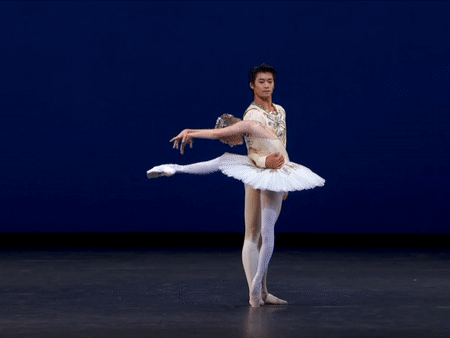
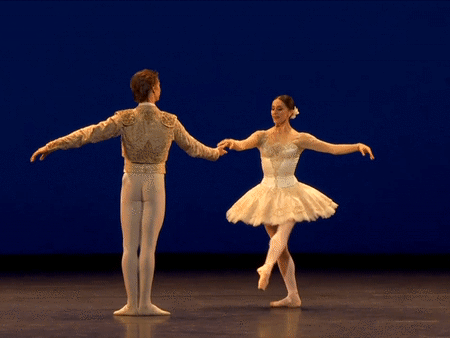

The Royal Ballet: Back On Stage
#anna rose o'sullivan#Marcelino Sambé#marcelino sambe#marcelino sambe and Anna rose O’Sullivan#la fille mal gardee#Frederick Ashton#Reece Clarke#Fumi Kaneko#fumi kaneko and reece clarke#in our wishes#cathy marston#Akane Takada#federico bonelli#akane takada and federico bonelli#swan lake#sarah lamb#Ryoichi Hirano#sarah lamb and ryoichi hirano#diamonds ballet#diamonds#jewels#jewels ballet#George Balanchine#Marianela Nunez#vadim muntagirov#marianela nunez and vadim muntagirov#laura morera#alexander campbell#laura morera and alexander campbell#the dream
120 notes
·
View notes
Photo

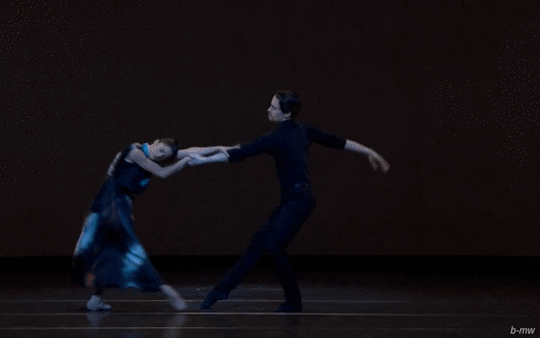
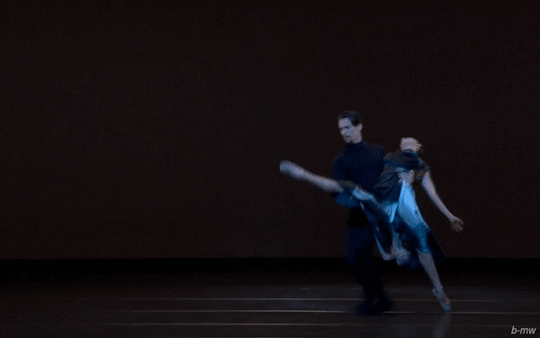
Romany Pajdak and Calvin Richardson in In Our Wishes
#romany pajdak#Calvin Richardson#in our wishes#the royal ballet#within the golden hour#ballet#my gif#royal opera house#sergei rachmaninoff#cathy marston#royal ballet#ballet gif#en pointe#the royal ballet: live – within the golden hour
13 notes
·
View notes
Text
The Cellist, a new ballet by Cathy Marston (contains spoilers)
The Cellist, a new ballet by Cathy Marston (contains spoilers)
Cathy Marston has created her first work for the Royal Ballet The Cellist, based on the life of British cellist Jacqueline du Pre, whose career was tragically cut short at the age of 28 due to the effects of multiple sclerosis. In this one-act ballet, Marston provides a series of vignettes, the critical moments in du Pre’s life. Her discovery of the cello as a young child, danced with sparkling…
View On WordPress
#Ballet#Cathy Marston#Contemporary choreography#contemporary dance#Jacqueline du Pre#new work#premiere#royal ballet#Royal Opera House
1 note
·
View note
Photo
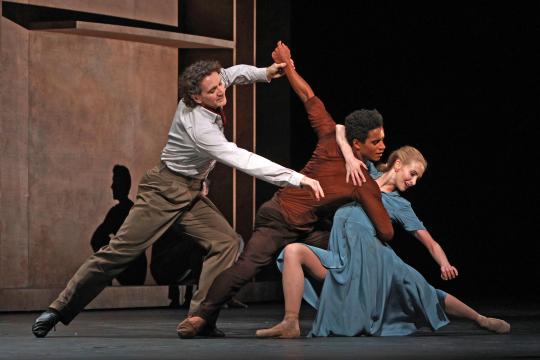
Gary Avis, Marcelino Sambé, and Lauren Cuthbertson in The Cellist, photo by Marilyn Kingwill for the Times of London.
Ballets about Jews are few and far between, and although Cathy Marston’s one-act ballet The Cellist, created for the Royal Ballet, is mostly quiet about this facet, it certainly is about a Jew.
Jacqueline Du Pré z”l (1945 – 1987) is generally accepted to have been one of the greatest cellists of all time, particularly known for her interpretations of Edward Elgar. She made many recordings still considered to be gold standards, appeared in the notable film The Trout alongside Daniel Barenboim, Itzhak Perlman, Pinchas Zukerman and Zubin Mehta, toured internationally, and taught extensively after her multiple sclerosis cut short her performing career.
Du Pré, whose family hailed from the Channel Islands, met and fell in love with Israeli-Jewish pianist and conductor Daniel Barenboim in the mid-1960s, and they developed a noted professional relationship as musician and conductor alongside their personal association. In 1967, during a visit to Israel, Du Pré converted to Judaism and married Barenboim at the Western Wall. Although her marriage to Barenboim eventually dissolved, her relationship to Judaism persisted throughout her life -- indeed, she was buried in the Jewish cemetery of Golders Green. In conversation with William Wordsworth, editor of the book Jacqueline du Pré: Impressions, she noted that, “I think the thing that made it so easy for me is that the Jewish religion is perhaps the most abstract. Since I was a child I had always wanted to be Jewish, not in any definite way, because, of course, I didn’t understand anything about it. Possibly it may somehow have been to do with the fact that so many musicians are Jewish. …” In a BBC interview in 1981, she described her feelings about Judaism’s relationship to music: “I am sometimes asked if religion has helped me and I always reply: To be quite honest, not as much as music, because for me the Judaism is almost bound up in the music. I just cannot separate them or indicate their boundaries.”
The Cellist is a condensed and stylized retelling of her life from the first time she picked up the instrument to her eventual retirement from the stage as a result of her MS. Overall, it presents a balanced picture of her life without sensationalism. Balletic treatments of women artists are few and far between, as are treatments of disability, as are ballets by women and ballets about Jews. I think it could be said that Marston treats Du Pré’s disability in the abled model of three-act tragedy, trying to fit it into a narrative form that life and illness simply don’t have. I was also at times uncomfortable with the objectification (literally) of Black dancer Marcelino Sambé as Du Pré’s cello and the spirit of music, although Sambé danced with incredible beauty and fluidity, and other dancers also played the role. Nonetheless, I think it to be worth seeking out to form your own opinions.
Du Pré’s Jewishness is lightly touched upon in a brief scene depicting her wedding with Barenboim: the couple are hoisted up upon chairs, as is traditional in Ashkenazi weddings, and the score quotes, of all things, the hora. It was a moment of sweet recognition in a world that ignores Jews, especially Jewish women, or relegates them to magical, greedy villains such as Coppelius.
Further reading: JWA entry on Du Pré’s life and work, archival news piece on Du Pré and Barenboim’s marriage, a personal reflection by blogger kaznyoung on the impact of Du Pré’s recordings of the Kol Nidre prayer, The Guardian review of Marston’s The Cellist, BBC review of The Cellist, Financial Times review providing a rather different take
5 notes
·
View notes
Text









The 2024 US premiere of Cathy Marston's Atonement (adapting the 2001 novel by Ian McEwan) at the Chicago Lyric Theatre, serving as the opening production of the Joffrey Ballet's 2024-25 season and was co-produced with Ballett Zürich.
#ballet#magazine shoot#magazine cover#balletcore#dance#art#photography#atonement#ian mcewan#cathy marston#joffrey ballet#ballett zürich
5 notes
·
View notes
Text
Elena Vostrotina and Brandon Lawrence

Elena Vostrotina Елена Востротина and Brandon Lawrence, “In Our Wishes”, choreo by Cathy Marston, music by Sergey Rachmaninoff Сергей Рахманинов, costume design by Roksanda, 2024 Havana International Ballet Festival, Sala Avellaneda, Teatro Nacional de Cuba, La Habana, Cuba (October 30, 2024).
Source and more info at: Photographer Maykel Espinosa Rodríguez Website Photographer Maykel Espinosa Rodríguez on Facebook Photographer Maykel Espinosa Rodríguez on Instagram (ballet) Photographer Maykel Espinosa Rodríguez on Instagram (street) Photographer Maykel Espinosa Rodríguez on Instagram (portrait)
via Elena Vostrotina on Instagram
Note I: This blog is open to receiving and considering any suggestions, contributions, and/or criticisms that may help correct mistakes or improve its content. Comments are available to any visitor.
Note II: Original quality of photographs might be affected by compression algorithm of the website where they are hosted.
#2024 Havana International Ballet Festival#Brandon Lawrence#Cathy Marston#Elena Vostrotina Елена Востротина#In Our Wishes#Maykel Espinosa Rodríguez#October 30 2024#Roksanda#Sala Avellaneda#Sergey Rachmaninoff Сергей Рахманинов#Teatro Nacional de Cuba#Ballet#Russian Ballet#Dancer#Ballerina#Balerina
0 notes
Text
Atonement/Ballett Zürich - Opernhaus Zürich 30.06.2024
Atonement/Ballett Zürich - Opernhaus Zürich 30.06.2024 #cathymarston #ianmcewan #ballettzürich #tanz #abbitte #review #junioballett #jonathanlo
Es braucht schon sehr viel Selbstbewusstsein und ein gutes Team, um einen internationalen Bestseller wie “Atonement” (Abbitte) von IAN MCEWAN als grosses Handlungsballett auf die Bühne zu bringen. Jeder kennt den Roman, die Erwartungen sind entsprechend hoch. CATHY MARSTON – Direktorin des Ballett Zürich – hat sich dieser Aufgabe angenommen und (zusammen mit EDWARD KEMP) einen interessanten Abend…

View On WordPress
#Abbitte#Atonement#Ballett Zürich#Bregje van Balen#Cathy Marston#Dores André#England#Giorgia Giani#Ian McEwan#Kritik#Luca Magri#MAx Cauthorn#Opernhaus Zürich#Philipp Rauber#Rezension
0 notes
Photo
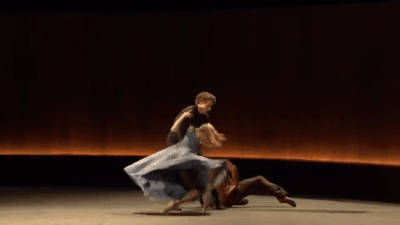

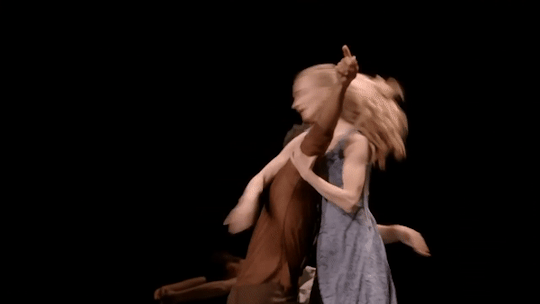
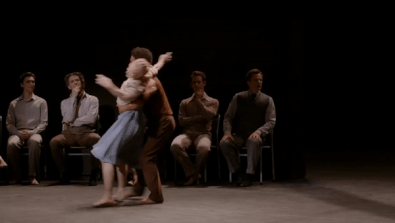
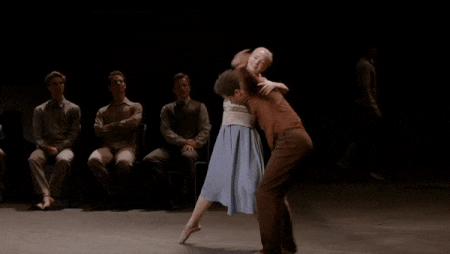



The Cellist @ The Royal Opera House Ballet
#ballet#dance#the cellist#Laura Cuthbertson#marcelino sambe#matthew ball#royal opera house#cathy marston
28 notes
·
View notes
Photo

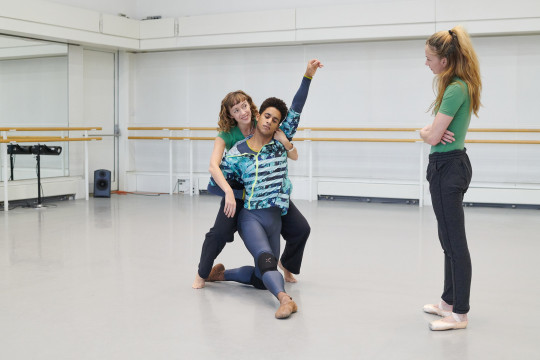
Lauren Cuthbertson and Marcelino Sambé rehearsing The Cellist with Cathy Marston (Royal Ballet, 2019)
10 notes
·
View notes